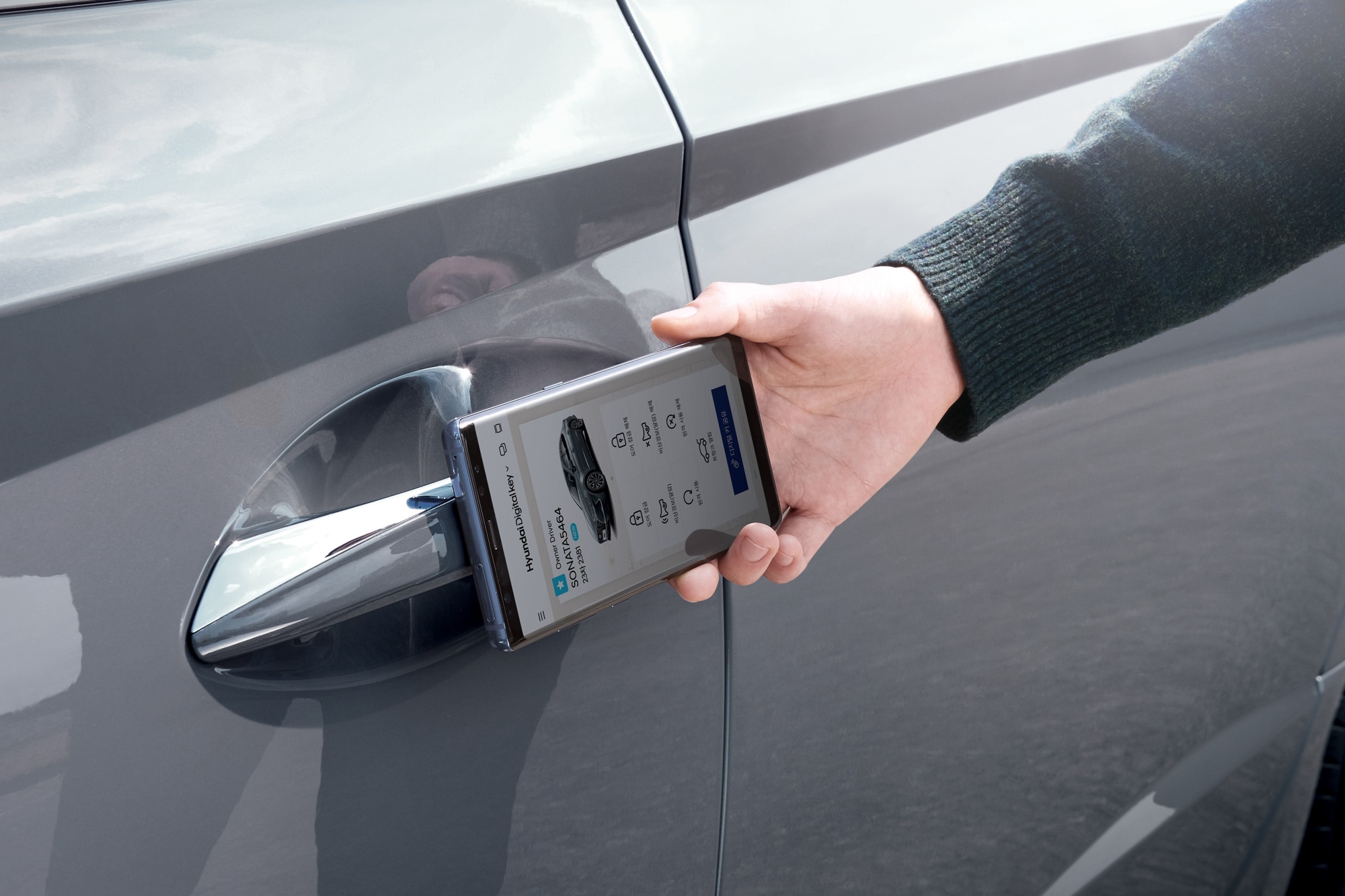NFC in Your Car: What You Need to Know
The wireless tap-to-pay tech on your phone is getting more automotive use.
 Hyundai
Hyundai
Near-field communications (NFC) technology is a close-range electronic system allowing your smartphone to securely share information with a reader. In the automotive world, it allows keyless entry through apps and instant customization of infotainment settings.
NFC Allows Communication Between Your Device and Car
Near-field communication is a system of electronic protocols designed to allow close-proximity wireless communication between two devices. If you have a modern smartphone or watch, you may have already experienced NFC's ability to instantly connect to other devices. Using Apple Pay, Google Pay, or Samsung Pay to tap to pay at the checkout counter of a retailer are good examples. Android phones have had NFC since 2010, and Apple introduced it in 2014.
NFC is designed for those very close encounters between devices and can also be found on tablets, wireless speakers, and gaming consoles such as the Nintendo Switch.
NFC Is Updated Tech for Simplified Data Connections
NFC is the most recent application of technology that began with RFID (radio frequency identification), an older electronic communications protocol that allows you to use key cards at a hotel or to wirelessly pay a toll on a freeway ramp.
In both technologies, the reader — the door lock or the touch-to-pay tab at a pharmacy — uses a magnetic field to pick up data from the NFC tag or device, create a wireless handshake between the two, and exchange data.
NFC works at a range of 3.5 inches or closer, meaning you need to make physical contact with the reader to exchange information. That's designed to prevent your banking or other important information from being accidentally shared with other phones or readers. It also doesn't require manual pairing as with Bluetooth connections.
 Hyundai
Hyundai
Your Car's Smartphone Key and Infotainment Preferences Can Be Handled via NFC
If your vehicle has a smartphone app that allows you to unlock or start your car, it likely uses NFC as a digital key. You need to tap the door handle; NFC's limited range doesn't allow remote unlocking like a key fob. Manufacturers including BMW, Kia, Hyundai, Mercedes-Benz, Tesla, and Volvo (in its new EX30 EV) have this as an option.
Many cars with new infotainment systems also use NFC to allow fast connections with your phone to personalize settings and make easy hands-free calls. Your music files, radio presets, and even air-conditioning and seat-memory settings can all be set through NFC connections. NFC can also be used to access your car, even if your phone's battery is drained.
You Have to Be Really Close for It to Work
As the name implies, you must be near something for NFC to work. While other radio-frequency tech such as your automobile toll pass can work while passing a reader at highway speeds, NFC needs near-physical proximity to exchange data.
More Automotive Applications for NFC Are on the Horizon
More and more vehicles now include features such as Amazon Alexa, Apple CarPlay, and other concierge services, so you may eventually be able to pay for gas, merchandise, music downloads, or even food orders by simply using your NFC-equipped phone in your car.
Vehicle service appointments could also use NFC signals to wirelessly get information about your automobile, pull its diagnostic codes, or allow you to easily pay for an oil change.
Written by humans.
Edited by humans.
 Andy Stonehouse
Andy StonehouseAndy Stonehouse literally fell into the world of auto writing while working as a ski-town journalist, and has not looked back since. A childhood spent dealing with the eccentricities of a 1976 MG Midget has made any subsequent auto experience a more safe and reliable drive. He has been blessed with nearby mountain trails and snowy roads in Colorado to do TV-adventure-styled test drives on a weekly basis.
Related articles
View more related articles